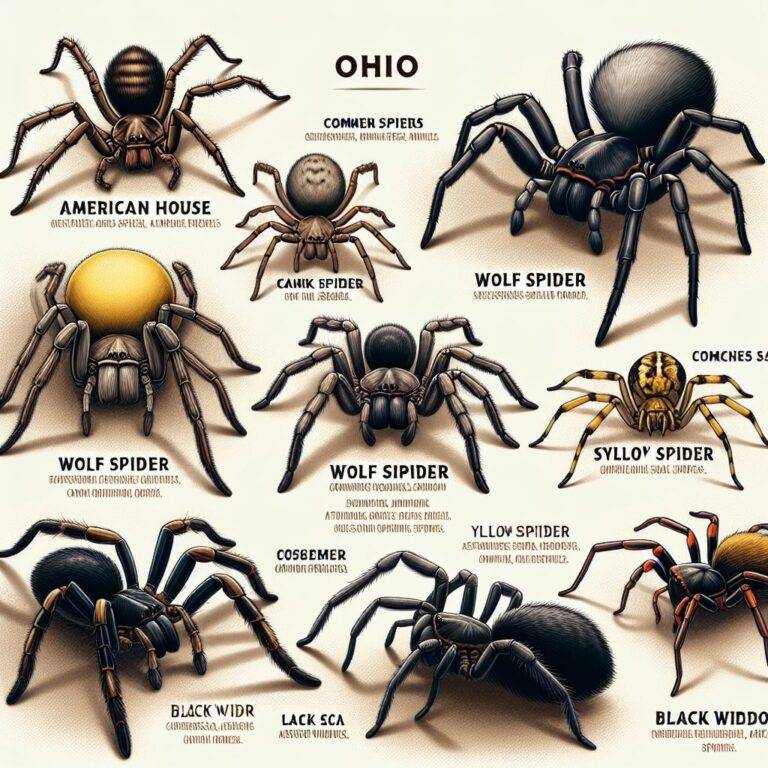
🕷️Wolf Spiders & Yellow Sac Spiders
A comprehensive guide to identification, behavior, and safety
🐺 Wolf Spiders (Lycosidae)
Physical Characteristics
Key Identification Features
Wolf spiders are easily recognizable by their distinctive eye arrangement with two large eyes in the front row, two medium eyes in the middle row, and four smaller eyes in the back row. They have excellent vision and are active hunters rather than web builders.
🎯 Quick ID Tip
Look for the reflective “tapetum” in their eyes when shining a light at them at night – their eyes will glow like tiny flashlights!
Behavior & Habitat
Hunting Style: Active hunters that chase down prey rather than building webs
Habitat: Ground-dwelling, often found in grass, under rocks, logs, or in burrows
Activity: Most active at night (nocturnal)
Maternal Care: Females carry egg sacs attached to their spinnerets and later carry spiderlings on their backs
🏠 Where You’ll Find Them
Gardens, lawns, forests, fields, and sometimes indoors during cold weather. They prefer areas with ground cover and hiding spots.
Bite Information
Venom: Mildly venomous but not dangerous to humans
Bite Effects: Similar to a bee sting – localized pain, redness, and swelling
Aggression: Generally non-aggressive; will only bite if directly threatened or handled
.
🟡 Yellow Sac Spiders (Cheiracanthium)
Physical Characteristics
Key Identification Features
Yellow sac spiders have a distinctive pale yellow to light green coloration with darker markings on their chelicerae (mouthparts). They have a more delicate appearance compared to wolf spiders and are significantly smaller.
🎯 Quick ID Tip
Look for their characteristic silken sacs or retreats in corners, under eaves, or between leaves where they rest during the day.
Behavior & Habitat
Hunting Style: Active hunters at night; build silk retreats rather than webs
Habitat: Both indoors and outdoors; common in homes, gardens, and on vegetation
Activity: Nocturnal hunters that are quite active
Sac Building: Create silk sacs in protected areas for daytime retreats
🏠 Where You’ll Find Them
Inside homes (especially bedrooms and bathrooms), on plants, under bark, in garden areas, and in silk sacs in corners or crevices.
⚠️ Important Bite Information
Venom: More potent than wolf spiders; can cause necrotic reactions in some cases
Bite Effects: Initial burning sensation, followed by redness, swelling, and potential tissue damage
Medical Attention: Seek medical care if bite symptoms worsen or show signs of infection
Aggression: More likely to bite than wolf spiders, especially when trapped against skin
📊 Quick Comparison
Size 0.5 -1.5 inches (with legs)
Color Brown, gray. black with patterns
Web Building No webs (ground hunters)
Eye Arrangement Distinctive 3-row pattern
Habitat: Ground-dwelling, outdoor-focused
Bite Severity Mild (bee sting-like)
Material behavior: Carries eggs and babies
Size 0.25-0.4 inches (body)
Color Pale yellow to light green
Web Building Silk sacs for retreats
Eye Arrangment Two rows of four
Habitat Both indoor and outdoor
Bite Severity Moderate (potential necrosis)
Aggression Level Higher (more likely to bite)
Material Behavior Guards egg saces in retreats
Size 0.2-0.4 inches
Leg Length Extrememly long (up to 2″ span)
Color Pale brown to gray
Web Building Irregular messy webs
Primary Habitat Dar, damp indoor areas
Bite None (essentially harmless)
Aggression level None (extremely passive)
🩺 General Safety Tips
Prevention: Shake out clothing and bedding, check shoes before wearing, and reduce clutter where spiders can hide.
If Bitten: Clean the wound, apply ice, monitor for unusual symptoms, and seek medical attention if the bite worsens or shows signs of infection.
Remember: Most spider bites are defensive reactions. Spiders generally prefer to avoid humans and will only bite when threatened or accidentally pressed against skin.
